Should You Upgrade Your Box Vents When Getting a New Roof?
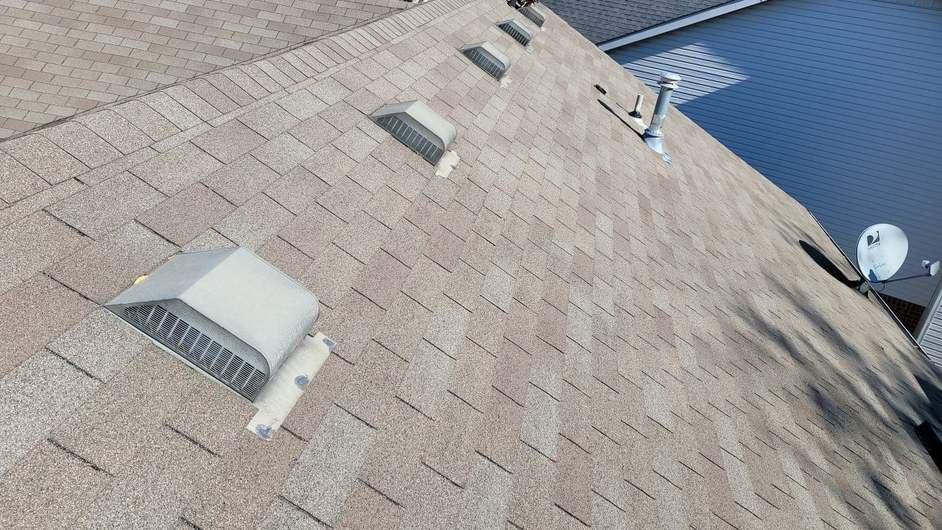
Getting a new roof requires decision-making on your part. A pretty big decision is determining if you want to stick with your current box vents or upgrade to another vent all together.
But is upgrading really worth it? Does the roof vent you choose even really impact anything? This article answers these questions and more.
For over 30 years, the team at Bill Ragan Roofing has helped homeowners understand the importance of their attic’s ventilation system. Because of this, I want to help you determine if sticking with your box vents is really worth it.
In this article, we’ll cover:
- A quick overview of the two types of attic ventilation systems.
- If you should upgrade your box vents during a roof replacement.
- Your roof vents options if you decide to upgrade.
By the end of this article, you’ll have the ability to make your roof vent decision all on your own. Let’s get to it.
The two types of attic ventilation systems
Before we get to if you should upgrade your box vents, you need to know the difference between the two types of ventilation systems. Both types do the job, but they differ in how they do it.
Let’s do a quick overview of active and passive attic ventilation.
Passive attic ventilation
Passive ventilation works by letting the air in the attic be moved around by natural sources. This ventilation system doesn’t rely on the vents themselves to let the trapped air escape.
It relies on wind or convection (the cool air pushes the warm air out) to move the air in and out of your attic properly. Passive roof vents have no moving parts, create no noise, and are virtually maintenance-free. Box vents fit into the type of ventilation system.
Active attic ventilation
Active ventilation actively pulls fresh air in from the outside and pushes the air in your attic out from the inside. It creates a drawing effect by pulling fresh air through the intake vents from the outside and pushing the air in your attic out through the exhaust vents.
Unlike passive ventilation, this system and its vents are actively working to ensure the air in your attic is moved around correctly. Like I said, both types of ventilation systems do the job as long as they’re done correctly.
Should you upgrade your box vents when getting a new roof?
Box vents are better than no attic ventilation. However, I always recommend upgrading box vents to an active ventilation system.
Box vents are popular because they're the cheapest type of roof vent you can find. But because they’re the cheapest, box vents are also the least effective type on the market.
Attics require a minimum of 1/150 of net free area (open area for air to pass through). This means that for each 150 square feet section in the attic, 1 square foot of net free area is required for ventilation.
For example, let’s say you have 1500 square feet in your attic (the numbers below are provided by Lamanco’s vent calculator).
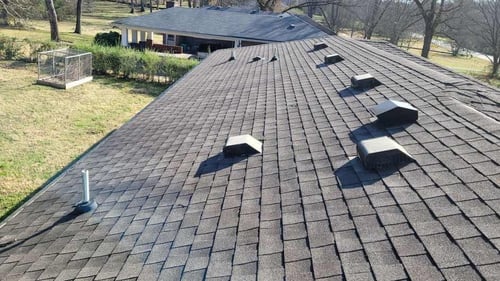 (7 box vents on a roof)
(7 box vents on a roof)
A standard size box vent has 50 inches of net free air space. This means you would need 8 box vents to ensure your attic is properly ventilated.
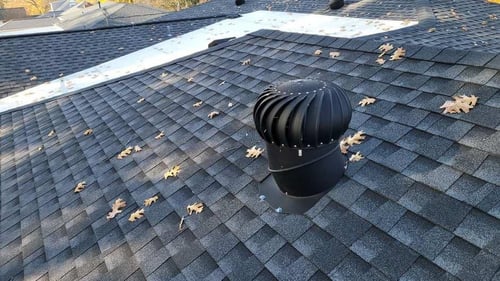
On the other hand, a 14” turbine vent has 150 inches of net free air space, plus a drawing effect to move the air around. Compared to 8 box vents, you would only need 2 turbine vents for the same attic space.
At the end of the day, it’s up to you if you want to upgrade your box vents. But any active roof vent is functionally better than a box vent.
What are your active roof vent options to upgrade your box vents?
Now you know that I recommend upgrading your box vents to an active vent when getting a roof replacement. But what are your active vent options?
Below are the 4 most common types of active roof vents for residential homes.
Turbine roof vents
Turbine vents (also known as whirly birds) use a drawing effect through convection (heat rising) to move the air around your attic even when there is no wind. As long as a turbine vent is installed properly, it’ll move the air around your attic 10-12 times per hour.
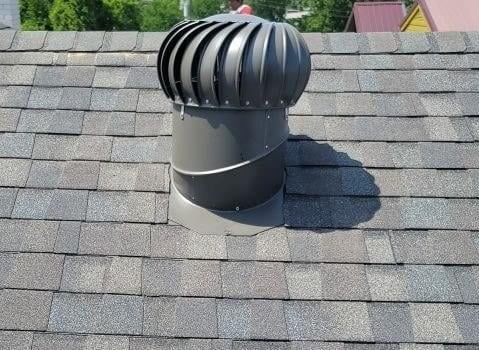
Because turbine vents have slats that make them open-aired to the attic, there is a misconception that rain, snow, and insects can enter your home through them. However, they’re designed to prevent this from happening unless the vent is damaged.
Power roof vents
Power vents are circular-shaped vents that offer a low profile on a roof. They’re installed near the ridge of the roof and use electricity to pull hot air out of an attic.
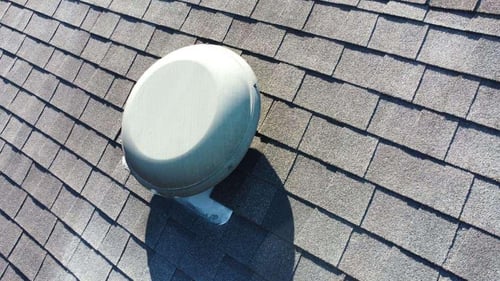
If there’s no power source, you’ll need an electrician to come in after the roofing contractor installs them to ensure the wiring is set up correctly. You’ll want to run a power vent along with a humidistat due to the humidity that will build up in your attic.
This humidity causes condensation and shortens your roof’s lifespan. Unfortunately, power vent motors tend to fail eventually, so be prepared to replace them at some point in the lifespan of your roof.
Ridge vents with a baffle
Ridge vents are cut into a roof’s ridge and run the entire length of the ridge line. This roof vent is popular with homeowners because it isn't noticeable from the ground.
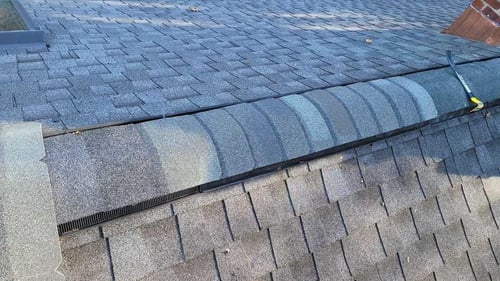
While they’re extremely popular, the downside to a ridge vent is that insects, debris, rain, and snow can enter the attic if there’s no filter. What makes a ridge vent active is a baffle.
A baffle has chutes that provide a channel for air to flow and move the air through your attic. If a ridge vent doesn’t have a baffle, it’s a passive vent.
Solar roof vents
Solar-powered vents are like power vents, but they use the sun as their power source instead of electricity. These vents are great from an energy saver standpoint, but they turn off when the solar-powered battery is charging.
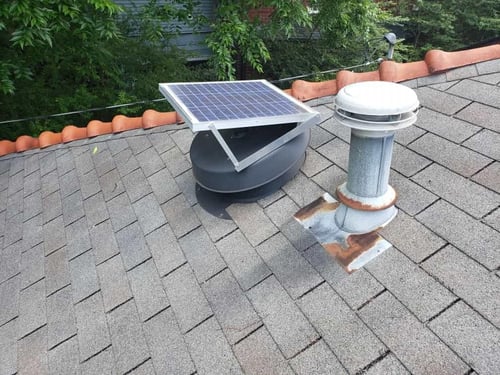
This means the solar battery won’t hold a charge long enough to power the vent all day. So, you may wind up with your air conditioner running more while the battery is recharging and, unfortunately, cause your energy bill to go up.
Why is proper attic ventilation so important to your roof and home?
There you have it. Now you know the two types of attic ventilation systems, why I recommend upgrading box vents, and your roof vent upgrade options.
Remember, there’s nothing wrong with sticking with your box vents. However, I always suggest an active vent for a more functional and better-ventilated attic.
Now you may be thinking, “Why should I care about upgrading my box vent? I should be fine as long as I have a roof vent.” This is true in most cases.
Unfortunately, most homes don’t have enough box vents to ensure their attic is properly ventilated. This leads to multiple problems that ruin your roof investment and even impacts your entire home.
That’s why you need to know why proper attic ventilation is so important. Which is why I wrote another article that gives you the 3 reasons your attic’s ventilation system is crucial to both your roof and home.
The team at Bill Ragan Roofing has provided high-quality roofing services to thousands of homeowners in Nashville and surrounding Middle Tennessee areas since 1990. We take the necessary steps to ensure your attic is properly ventilated when we step into your home.
Check out 3 Reasons Why Proper Attic Ventilation Is Important to Your Roof and Home to learn how big of an impact your attic’s ventilation system has.


